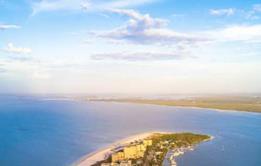Heavy rain and hurricane-force winds are forecast for west-central Florida beginning Wednesday morning
Life-threatening storm surge, hurricane force winds, flash floods and possible mudslides are expected in parts of western Cuba today as Hurricane Ian makes landfall as a category 3 storm with windspeeds up to 129mph.
The storm’s current track sees it intensifying further as it moves across the warm waters of the eastern Gulf of Mexico before making a second landfall on the west-central coast of Florida in the next 48 hours. A Hurricane Watch is in effect for Englewood to the Anclote River, including Tampa Bay.
According to Guy Carpenter, industry losses ranging between $15 billion and $35 billion are an increasing possibility.
“Over the last two days, the main question was when would the spread of weather models start to converge on a more likely outcome? Unfortunately for the Tampa metro region, a track slowing just offshore with landfall likely within 50 miles of Tampa Bay is a near worst case scenario for damage to the region,” said the broker in an advisory.
“Small wobbles that are challenging to forecast in advance are likely to be the final factor governing the severity of wind and storm surge impacts at any given location.”
According to a commentary from Acrisure Re, Ian is on track to cause significant flood damage, despite landfalling uncertainty.
“A sharp increase in southwesterly vertical wind shear and a drier mid-level environment to the northwest of Ian is likely to induce some weakening as the storm approaches the west coast of Florida Wednesday evening into Thursday,” it noted in a commentary.
”However, an even greater concern is the slower forward motion that is forecast during this period. This would likely prolongue the storm surge, wind, and rainfall impacts along the affected portions of the west coast of Florida.”
In 2017, Hurricane Harvey was a large, slow moving system which caused record flooding across Houston and other parts of Texas as it moved inland. Attribution studies have made the link between climate change and ‘wetter’ storms.
Total economic damage from Ian to breach $100 billion, says KCC

Cat modeller predicts high proportion of litigated claims due to ‘tremendous amount’ of coastal flooding
- 1
- 2
- 3
- 4
- 5
- 6
- 7
- 8
- 9
- 10
 Currently
reading
Currently
reading
Hurricane Ian slams into Cuba; gains intensity
- 12

































No comments yet